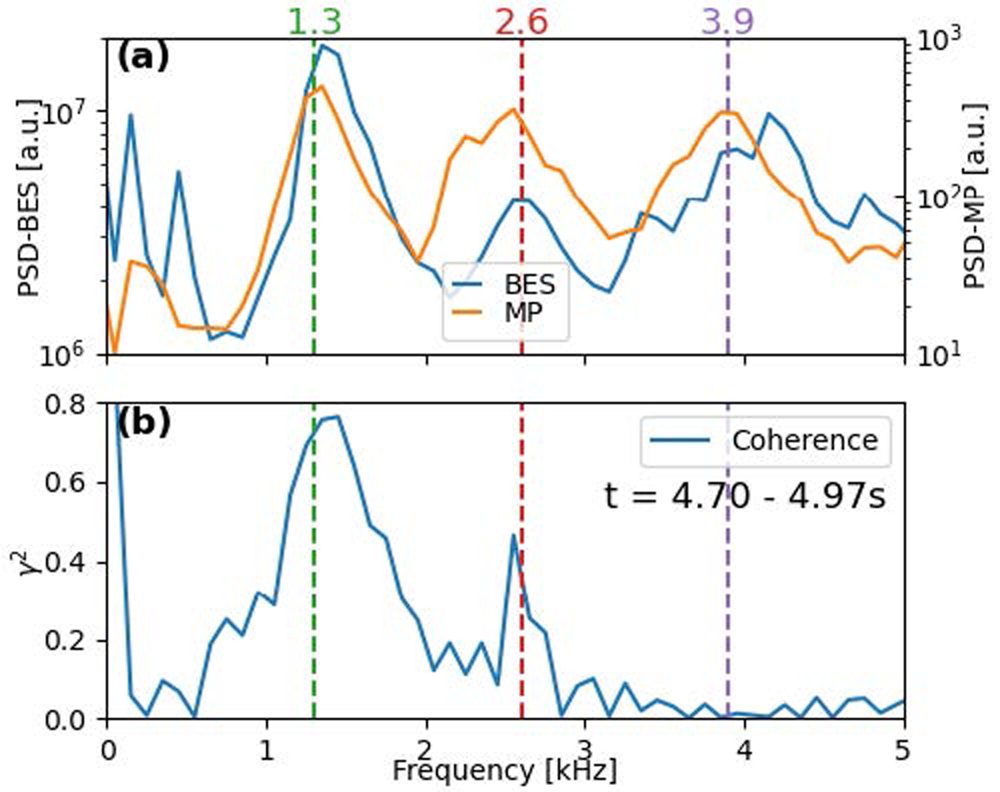Curious interrelation between density and magnetic field low frequency fluctuations
For H-mode plasma in the Large Helical Device (LHD), we examined fluctuations in particle density and the confinement magnetic field, through analyses of measurement signals. We discovered for the first time, that the density and magnetic fluctuations showed randomly different phases at higher harmonics. This result suggests that density fluctuation does not necessarily share the same performance and characteristics as magnetic fluctuation. This shows the importance of advanced density fluctuation diagnostics in order to achieve fusion power generation.


L-H mode transition is a beneficial confinement improvement that occurs in fusion plasma. After the mode transition, the plasma density and temperature increases with a higher gradient and forms a pedestal structure. The mode transition situation in the LHD is special, where only the density confinement improves, while the temperature remains the same. The difference is regarded as caused by a different profile saturation mechanism, which is related to some Magneto Hydrodynamic (MHD) mode fluctuations. However, a self-consistent theory is yet to be settled. In this research, we aim to examine the correlation relationship between the density fluctuation that relates to particle transport and profile saturation, and the magnetic fluctuation that relates to MHD. We analyzed the two measurement signals in both frequency and time domains.
For target discharge (#156774), the magnetic fluctuation is measured using a magnetic probe and Faraday's law of induction. On the other hand, the density fluctuation signal is measured using Beam Emission Spectroscopy (BES). BES uses the heating of a neutral beam as a probe which is injected into the plasma where the Doppler effect occurs for H-alpha emissions from hydrogen. Since the emission strength is proportional to the density, a local density fluctuation can be captured by extracting the shifted emission component. In H-mode plasma, both the density fluctuation and the magnetic fluctuation show groups of coherent fundamental and harmonic modes at 1.3, 2.6 and 3.9 kHz. The cross-coherence/correlation is low at higher harmonics, despite high coherence at fundamental harmonics. The conventional MHD theory treats a plasma particle as moving together with magnetic flux lines, which means that the density fluctuations are excited by their matching magnetic fluctuation harmonics. We interpret that the density and magnetic fluctuations share the same phase at fundamental harmonics while the phase is randomly different at higher harmonics. This result shows that the density fluctuation is not necessarily identical to the magnetic one and it becomes much more significant to monitor the density fluctuations by advanced methods.
The results were published on March 19, 2021 in Plasma and Fusion Research, an online journal by the Japan Society of Plasma Science and Nuclear Fusion Research.
